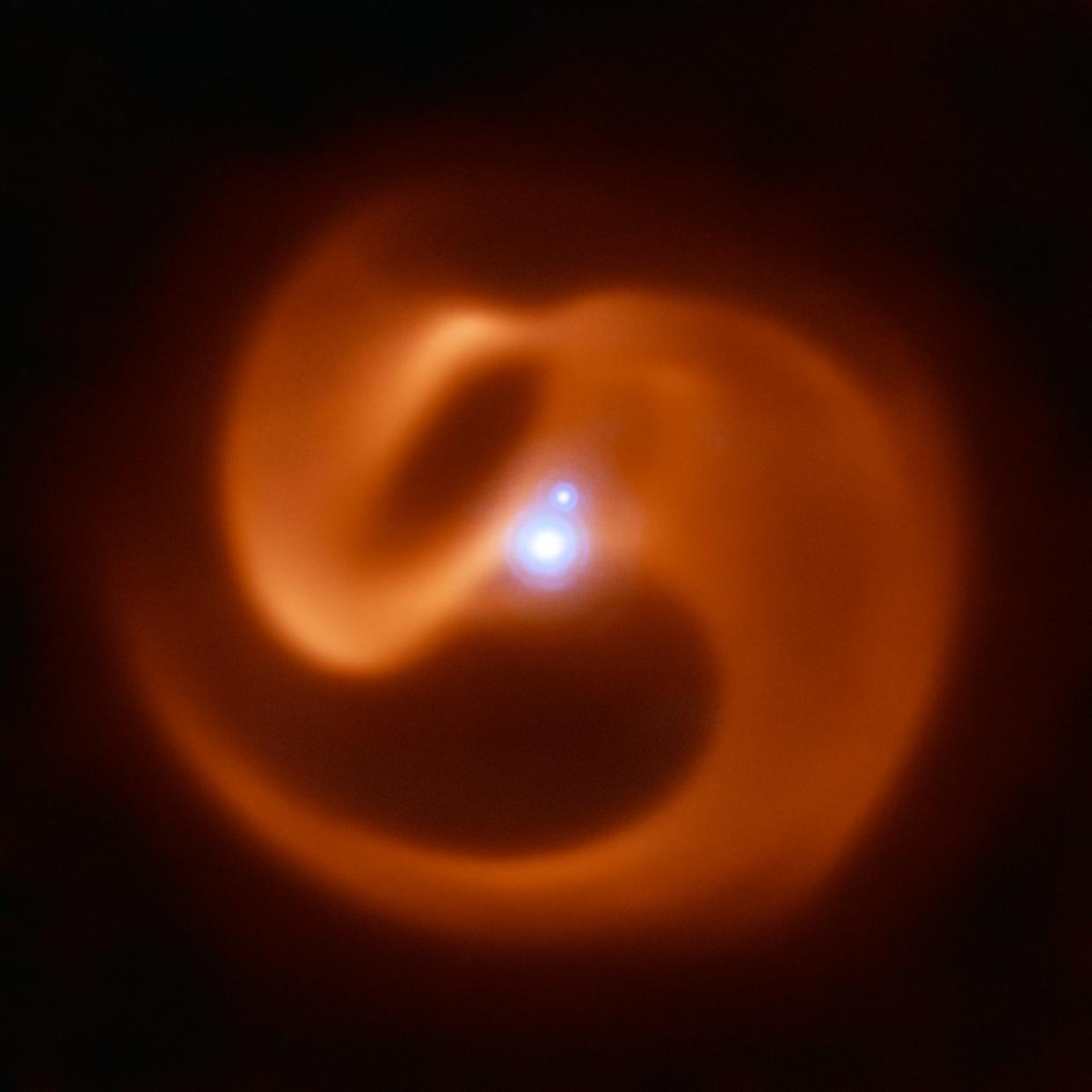Dying star in our galaxy ‘could be time bomb which will unleash blast of deadly rays’

A massive triple-star system with a nest of huge stars surrounded by a ‘wheel’ of dust could be a time bomb which will unleash a powerful blast of deadly rays, scientists say.
The star system, spotted by the ESO’s Very Large Telescope could be a Wolf-Rayet star – a source of one of the most powerful explosions in the universe, a long-duration gamma ray burst.
‘This is the first such system to be discovered in our own galaxy,’ says Joseph Callingham of the Netherlands Institute for Radio Astronomy.
‘We never expected to find such a system in our own backyard.’
MORE: Argentine submarine found in Atlantic a year after going missing with 44 crew on board
MORE: Woman claims airport valet drove her car 500 miles then got her a parking ticket
The star is still 8,000 light years from Earth, so there is no risk of the explosion affecting our planet.
GRBs are among the most powerful explosions in the universe.
Lasting between a few thousandths of a second and a few hours, they can release as much energy as the Sun will output over its entire lifetime.
Long-duration GRBs – those which last for longer than 2 seconds – are believed to be caused by the supernova explosions of rapidly-rotating Wolf-Rayet stars.
Researchers believe the star, which they’ve named Apep after an ancient Egyptian deity, is hurling out a solar wind at up to 12 million kmh.
This stage is short-lived, and Wolf-Rayets survive in this state for only a few hundred thousand years — the blink of an eye in cosmological terms.
This would imply that the star is undergoing near-critical rotation – that is, rotating so fast that it is nearly ripping itself apart.
A Wolf-Rayet star with such rapid rotation is believed to produce a long-duration GRB when its core collapses at the end of its life.

 Yahoo News
Yahoo News 

